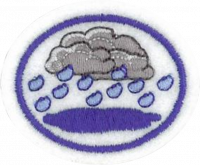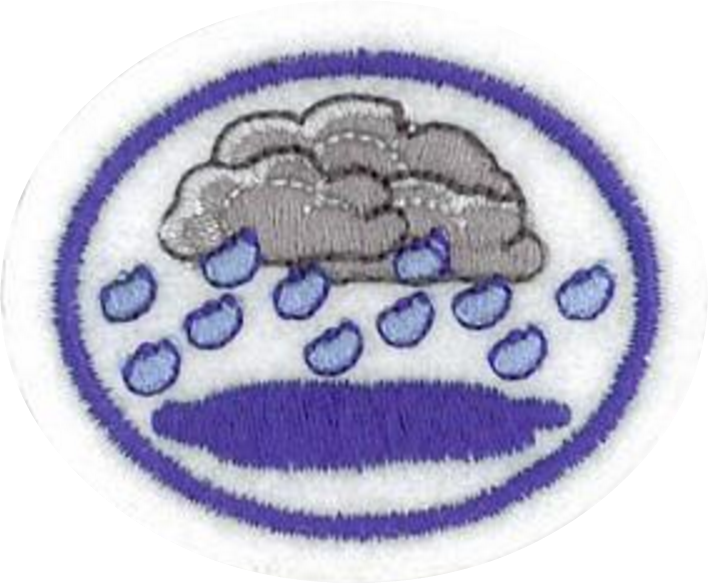Difference between revisions of "AY Honors/Water Science/Answer Key/es"
(Created page with "{{clear}}") |
(Created page with "</noinclude> <!-- 2. Hacer una lista y describir (verbalmente u oralmente) algunas características del agua que lo distingue de casi todos los otros elementos. -->") |
||
| Line 48: | Line 48: | ||
{{CloseReq}} <!-- 4 --> | {{CloseReq}} <!-- 4 --> | ||
{{ansreq|page={{#titleparts:{{PAGENAME}}|2|1}}|num=5}} | {{ansreq|page={{#titleparts:{{PAGENAME}}|2|1}}|num=5}} | ||
| − | <noinclude> | + | <noinclude></noinclude> |
| − | </noinclude> | + | <!-- 5. Por medio de fotografías o diagramas, identificar y hacer una lista de las cinco clases principales de precipitación. --> |
| − | <!-- 5. | ||
| − | |||
| − | |||
| − | |||
| − | |||
| − | |||
| − | |||
| − | |||
<div lang="en" dir="ltr" class="mw-content-ltr"> | <div lang="en" dir="ltr" class="mw-content-ltr"> | ||
Revision as of 16:18, 23 April 2021
Nivel de destreza
1
Año
2015
Version
11.11.2025
Autoridad de aprobación
División Norteamericana
1
2
3
4
5
6
The boiling point of water is 212 °F or 99.98 °C. The freezing point of water is 32 °F or 0.0 °C.
7
Printable Water Science Jeopardy pages available here.
7a
A US liquid gallon of water weighs about 8.34 pounds or 3.78 kilograms at 62 °F (17 °C), making it about 16.6% lighter than the imperial gallon.
7b
The Human body is approximately 65% water Body Water
7c
The Pacific Ocean
7d
The Caspian Sea List of Lakes by Area
7e
Lake Superior Lakes by Area
7f
It travels faster through water Speed of sound
7g
The Mariana Trench
7h
The Nile River
7i
Three days
7j
The presence of Calcium and Magnesium in the water
7k
The toilet and shower use approximately 27% of household water
7l
Relative humidity
7m
Panama Canal
7n
Water conducts heat around 25 times more efficiently than air.
7o
It is commonly recommended to drink eight 8-ounce glasses, which equals about 2 liters, or half a gallon. Though, some experts recommend drinking a half-ounce to an ounce for each pound of your body weight.
7p
Chlorine.
7q
A typical shower uses 2.1 gallons per minute (gpm) So, a 5 minute shower would used a total of 10.5 gallons.
7r
The Mississippi [In the U.S.]
7s
True
8
8a
Water covers 71% of the Earth's surface. It is vital for all known forms of life.
8b
Only 2.5% of this water is freshwater, and 98.8% of that water is in ice (excepting ice in clouds) and groundwater. Less than 0.3% of all freshwater is in rivers, lakes, and the atmosphere, and an even smaller amount of the Earth's freshwater (0.003%) is contained within biological bodies and manufactured products. A greater quantity of water is found in the earth's interior.
8c
On Earth, 96.5% of the planet's crust water is found in seas and oceans, 1.7% in groundwater, 1.7% in glaciers and the ice caps of Antarctica and Greenland, a small fraction in other large water bodies, and 0.001% in the air as vapor, clouds (formed of ice and liquid water suspended in air), and precipitation.
9
9a
The most important use of water in agriculture is for irrigation, which is a key component to produce enough food.
9b
Water is heavily used to form solutions and mixtures for washing processes. A number of industrial processes rely on reactions using chemicals dissolved in water. Washing is also an important component of several aspects of personal body hygiene.
9c
To function properly and regulate body temperature, the human body requires between one and seven liters of water per day to avoid dehydration.
9d
The evaporation of water carries heat away from fire. Because of this, water is very useful as a fire extinguishing fluid.
9e
The use of water plays a critical role in the world economy. The transportation of materials through rivers and canals by means of cargo ships and tankers fosters international shipping and trading.
10
10a
10b
10c
10d
10e
10f
10g
10h
10i
10j
10k
10l
10m
11
| Tip for earning from home during the pandemic | |
| You can have this discussion with your family in person, or with your club via video conferencing. |
11a
{{
Bible verse |book=Genesis |chapter=1 |verse=20 |version=NKJV |text=Then God said, “Let the waters abound with an abundance of living creatures, and let birds fly above the earth across the face of the firmament of the heavens.”
}}
God commanded that the waters bring forth life for all water living creatures.
11b
{{
Bible verse |book=Exodus |chapter=14 |verse=21 |version=NKJV |text=Then Moses stretched out his hand over the sea; and the Lord caused the sea to go back by a strong east wind all that night, and made the sea into dry land, and the waters were divided.
}}
In the midst of fear and doubt, God used the staff of Moses to open the Red Sea so the children of Israel could walk through on dry ground.
11c
{{
Bible verse |book=Matthew |chapter=28 |verse=19 |version=NKJV |text=Go therefore and make disciples of all the nations, baptizing them in the name of the Father and of the Son and of the Holy Spirit.
}}
The great commission to all believers, to go unto the entire world and baptize by immersion in water; all those who believe in the name of the Father, Son, and the Holy Ghost.
11d
{{
Bible verse |book=John |chapter=3 |verse=5 |version=NKJV |text=Jesus answered, “Most assuredly, I say to you, unless one is born of water and the Spirit, he cannot enter the kingdom of God.
}}
A man must be born again in the Spirit and by the act of baptism (immersion in water) to enter into the Kingdom of God.
11e
{{
Bible verse |book=John |chapter=4 |verse=14 |version=NKJV |text=but whoever drinks of the water that I shall give him will never thirst. But the water that I shall give him will become in him a fountain of water springing up into everlasting life.”
}}
Jesus said that the water that He gives is unlike any water, for we will never thirst again and will lead us to everlasting life.
11f
{{
Bible verse |book=Revelation |chapter=22 |verse=1 |version=NKJV |text=And he showed me a pure river of water of life, clear as crystal, proceeding from the throne of God and of the Lamb.
}}
John the Revelator was shown crystal clear water flowing from the throne of god and the Lamb.
12
The distillation method can be used to convert salt water into clean drinking water. This process basically brings the salt water to a boil, causing the water to evaporate, leaving the salt and other chemicals behind. The evaporated water is then captured and recondensed by cooling to form fresh drinking water.
- Place a clean cup (such as a ceramic mug) in the center of a deep pot.
- Pour salt water into the pot, being sure to not add so much as to cause the mug to float. Be careful not to get any of the salt water in the mug
- Place a lid upside-down on the pot so that the handle faces down over the mug.
- Bring the water to a boil.
- As the water boils, it will evaporate and condense on the lid as liquid water. This water will then drip from the lid into the mug.
- Do not let all of the water evaporate from the pot.
- Turn off the heat and allow to cool before touching the mug.






